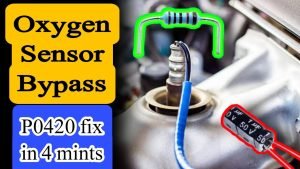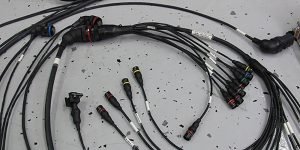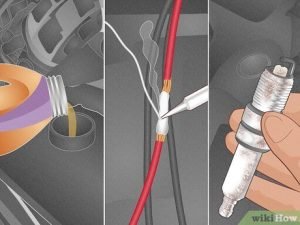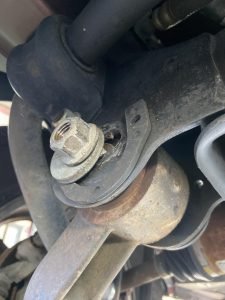Are you experiencing issues with your vehicle’s throttle response or acceleration? If so, it’s possible that your throttle position sensor (TPS) is not calibrated correctly. The TPS is responsible for communicating the position of the accelerator pedal to the engine control unit (ECU), which in turn adjusts the amount of fuel and air delivered to the engine. A misaligned or improperly calibrated TPS can result in poor engine performance, reduced fuel efficiency, and potentially even engine stalling. In this guide, we’ll walk you through the process of adjusting your TPS to restore proper function and performance to your vehicle.
Contents
- What is a Throttle Position Sensor?
- Symptoms of a Misaligned TPS
- Tools Needed for TPS Adjustment
- Preparing Your Vehicle for TPS Adjustment
- Locating the TPS
- Removing the TPS
- Adjusting the TPS
- Reinstalling the TPS
- Testing the TPS
- Reconnecting the Battery
- Common TPS Adjustment Mistakes to Avoid
- Is Adjusting the Throttle Body the Same as Adjusting the Throttle Position Sensor?
- FAQs
- Conclusion
What is a Throttle Position Sensor?
Before we dive into the adjustment process, it’s important to understand what a throttle position sensor is and how it works. The TPS is a small electronic component mounted on the throttle body of your vehicle. It communicates the position of the accelerator pedal to the ECU, which then adjusts the amount of fuel and air delivered to the engine. The TPS is designed to provide a linear signal that corresponds to the position of the throttle plate. In other words, the more you press down on the gas pedal, the more the TPS signal increases, and the more fuel and air the engine receives.
Symptoms of a Misaligned TPS
A misaligned or improperly calibrated TPS can result in a variety of symptoms, including:
- Poor throttle response
- Hesitation or stumble during acceleration
- Reduced fuel efficiency
- Engine stalling or rough idling
- Check engine light illumination
If you’re experiencing any of these symptoms, it’s possible that your TPS needs to be adjusted.
Tools Needed for TPS Adjustment
Adjusting your TPS requires a few basic tools, including:
- A multimeter for measuring voltage
- A screwdriver (either flathead or Phillips, depending on the TPS)
- A TPS adjustment tool (optional)
Preparing Your Vehicle for TPS Adjustment
Before you begin adjusting your TPS, it’s important to take a few precautions to ensure your safety and the safety of your vehicle. First, make sure the engine is off and the key is removed from the ignition. If your vehicle has an airbag, disconnect the negative battery cable and wait at least 10 minutes before proceeding. This will allow the airbag system to discharge and prevent accidental deployment.
Locating the TPS
The TPS is typically located on the throttle body, which is mounted on the intake manifold. The exact location of the TPS will vary depending on the make and model of your vehicle, so consult your owner’s manual or a repair manual for specific instructions. Once you’ve located the TPS, you’ll need to remove it in order to adjust it.
Removing the TPS
To remove the TPS, start by disconnecting the electrical connector from the sensor. This may require the use of a small flathead screwdriver or a pair of pliers to gently pry the connector off. Once the connector is removed, you’ll need to loosen the mounting screws that hold the TPS in place. Use a screwdriver (either flathead or Phillips, depending on the type of screws) to loosen the screws, but be careful not to strip them.
Once the screws are loosened, you should be able to slide the TPS off of the throttle body. If the TPS is stuck or difficult to remove, you may need to use a small amount of lubricant or carefully pry it off with a flathead screwdriver. Just be sure not to damage the TPS or the throttle body in the process.
Adjusting the TPS
With the TPS removed, you can begin adjusting it to the correct position. First, you’ll need to determine the correct voltage range for your particular vehicle. This information can usually be found in your owner’s manual or a repair manual. Once you know the correct voltage range, you’ll need to use a multimeter to measure the voltage output of the TPS.
To do this, set your multimeter to the DC voltage setting and attach the positive lead to the center pin on the TPS connector. Attach the negative lead to a good ground point, such as the battery negative terminal or the engine block. With the ignition switch in the “on” position (but without starting the engine), slowly press down on the accelerator pedal while watching the multimeter display. The voltage reading should increase smoothly and linearly as you press down on the pedal. If the voltage reading jumps or spikes, or if it doesn’t increase smoothly, the TPS is likely misaligned and needs to be adjusted.
To adjust the TPS, loosen the mounting screws slightly and rotate the TPS until the voltage reading falls within the correct range. Use a TPS adjustment tool if necessary to get the exact position. Once the TPS is adjusted correctly, tighten the mounting screws and double-check the voltage reading to ensure it’s within the correct range.
Reinstalling the TPS
With the TPS adjusted, you can now reinstall it on the throttle body. Carefully slide the TPS back into place and tighten the mounting screws. Be careful not to over-tighten the screws, as this can damage the TPS or the throttle body.
Once the TPS is securely in place, reattach the electrical connector to the sensor. Double-check to make sure the connector is properly seated and locked in place.
Testing the TPS
Before starting the engine, it’s a good idea to test the TPS to ensure it’s functioning properly. With the ignition switch in the “on” position, slowly press down on the accelerator pedal while monitoring the voltage reading on your multimeter. The voltage should increase smoothly and linearly as you press down on the pedal. If the voltage reading jumps or spikes, or if it doesn’t increase smoothly, the TPS may still be misaligned and may need further adjustment.
Reconnecting the Battery
Once you’re satisfied that the TPS is adjusted correctly, you can reconnect the negative battery cable (if you disconnected it earlier). Be sure to tighten the cable securely to ensure a good connection.
Common TPS Adjustment Mistakes to Avoid
Adjusting your TPS can be a delicate process, and there are a few common mistakes to avoid. These include:
Over-tightening the mounting screws, which can damage the TPS or the throttle body
Using the wrong type of screwdriver or tool, which can damage the screws or the TPS
Checking the voltage with the engine running, which can give inaccurate readings
Not disconnecting the battery before starting the adjustment process, which can cause electrical damage
Using too much force to remove or install the TPS, which can damage the sensor or the throttle body
Failing to double-check the voltage readings after adjusting the TPS, which can lead to further problems down the road
Is Adjusting the Throttle Body the Same as Adjusting the Throttle Position Sensor?
Adjusting the throttle body techniques is not the same as adjusting the throttle position sensor. While the throttle body controls the air intake, the position sensor monitors the throttle’s position. Both are crucial for proper engine function, but they require different adjustment methods to ensure optimal performance.
FAQs
What is a throttle position sensor?
A throttle position sensor (TPS) is a sensor that monitors the position of the throttle plate in the engine’s throttle body. It sends this information to the engine control module (ECM), which uses it to control the fuel injection and ignition timing.
Why might I need to adjust my TPS?
If your engine is idling rough, hesitating, or stalling, it’s possible that the TPS is misaligned and needs to be adjusted.
How do I know if my TPS needs to be adjusted?
You can use a multimeter to measure the voltage output of the TPS and compare it to the correct voltage range for your particular vehicle. If the voltage reading is outside of the correct range or jumps or spikes, the TPS may need to be adjusted.
Can I adjust my TPS myself, or should I take it to a mechanic?
Adjusting your TPS is a relatively simple process that can be done yourself, but it’s important to approach it with care and attention to detail. If you’re uncomfortable working on your own vehicle, or if you’re not sure you have the right tools or knowledge, it’s best to take your vehicle to a mechanic.
Is it safe to drive with a misaligned TPS?
Driving with a misaligned TPS can cause a variety of problems, including poor fuel economy, rough idle, and decreased performance. In some cases, it can even cause the engine to stall or fail to start. It’s best to address TPS issues as soon as possible to avoid further problems down the road.
Conclusion
Adjusting your throttle position sensor can help improve the performance and drivability of your vehicle, but it’s important to approach the process with care and attention to detail. By following the steps outlined in this article and avoiding common mistakes, you can ensure that your TPS is properly aligned and functioning as it should.
Affiliate Disclosure: As an Amazon Associate, I earn from qualifying purchases made through links on this site.










